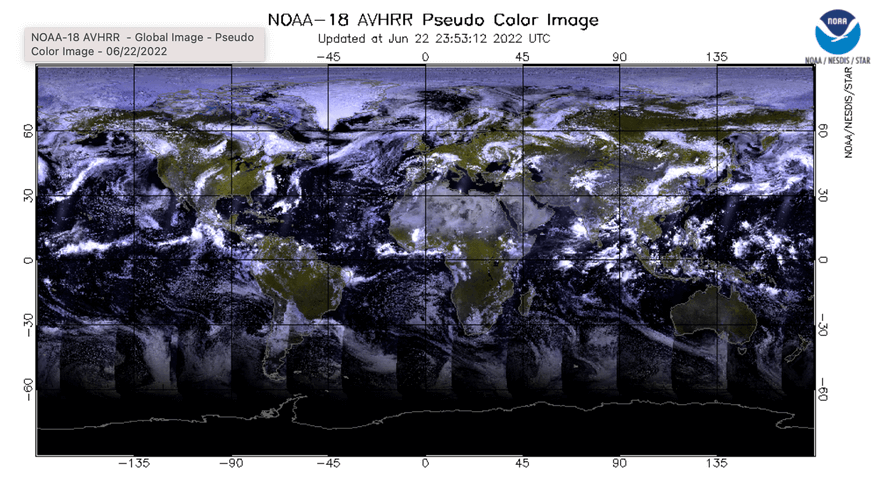
Microsoft, Xplore and NOAA demonstrate cloud-based satellite operations (Image Credit: Space News)
SAN FRANCISCO – Over the last year, Microsoft and Xplore worked with the National Oceanic and Atmospheric Administration to show how commercial services could support operations of polar-orbiting weather satellites.
During a proof-of-concept demonstration, NOAA obtained data downlinked from NOAA-18 through an Azure Orbital ground station in Quincy, Washington, to the Azure cloud. Commands to the 17-year-old satellite were sent with Xplore’s Major Tom mission control software running in Azure Orbital.
“By combining Azure Orbital with Xplore’s Major Tom mission control software platform, NOAA was able to securely transmit commands to its NOAA-18 spacecraft and verify receipt of those commands in near real-time,” Stephen Kitay, Microsoft Azure Space senior director, told SpaceNews. “What this allows our customers to do is rather than paying for fully manned, dedicated infrastructure, they’re paying for a service. There are no capital expenditures. They are only paying for what they need. NOAA is able to continue the operation of its legacy satellites without those costly capital investments to its ground infrastructure.”
In terms of security, Microsoft’s “cloud-based solutions performed successfully across the measures that NOAA set out,” Kitay said.
NOAA is investing in a new generation of Earth-observing satellites as well as ground and IT systems to transfer data into the cloud. Ground-station-as-a-service and cloud-services providers are expected to play an important role in helping NOAA process, disseminate and store data.
In April, NOAA sought information from contractors interested in providing engineering and information-technology services, and handling flight operations for polar-orbiting satellites NOAA-15, NOAA-18 and NOAA-19.
The NOAA-18 demonstration could inform that effort and also prompt other government agencies to turn to commercial clouds for primary or backup satellite services.
“I would envision the future is a hybrid architecture where the government has unique government applications and missions, but they are also leveraging commercial technologies and integrate those technologies into the missions that they are performing,” Kitay said.
When Microsoft and NOAA signed the cooperative research and development agreement last year, their partner was Kubos. In April, Xplore acquired Kubos and its Major Tom software.
“By our continued support of the Major Tom team, we were able to continue that work,” said Lisa Rich, Xplore founder and chief operating officer.








